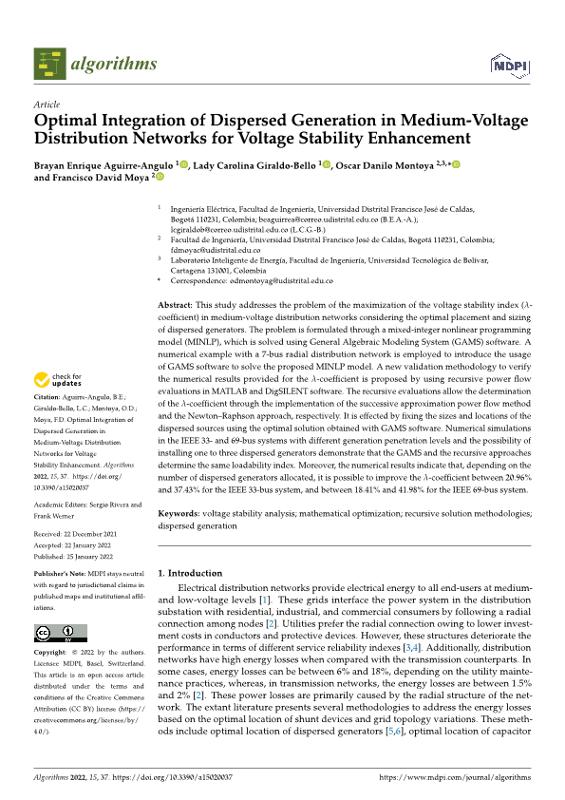Resumen
: This study addresses the problem of the maximization of the voltage stability index (λcoefficient) in medium-voltage distribution networks considering the optimal placement and sizing of dispersed generators. The problem is formulated through a mixed-integer nonlinear programming model (MINLP), which is solved using General Algebraic Modeling System (GAMS) software. A numerical example with a 7-bus radial distribution network is employed to introduce the usage of GAMS software to solve the proposed MINLP model. A new validation methodology to verify the numerical results provided for the λ-coefficient is proposed by using recursive power flow evaluations in MATLAB and DigSILENT software. The recursive evaluations allow the determination
of the λ-coefficient through the implementation of the successive approximation power flow method and the Newton–Raphson approach, respectively. It is effected by fixing the sizes and locations of the dispersed sources using the optimal solution obtained with GAMS software. Numerical simulations in the IEEE 33- and 69-bus systems with different generation penetration levels and the possibility of installing one to three dispersed generators demonstrate that the GAMS and the recursive approaches determine the same loadability index. Moreover, the numerical results indicate that, depending on the
number of dispersed generators allocated, it is possible to improve the λ-coefficient between 20.96% and 37.43% for the IEEE 33-bus system, and between 18.41% and 41.98% for the IEEE 69-bus system














